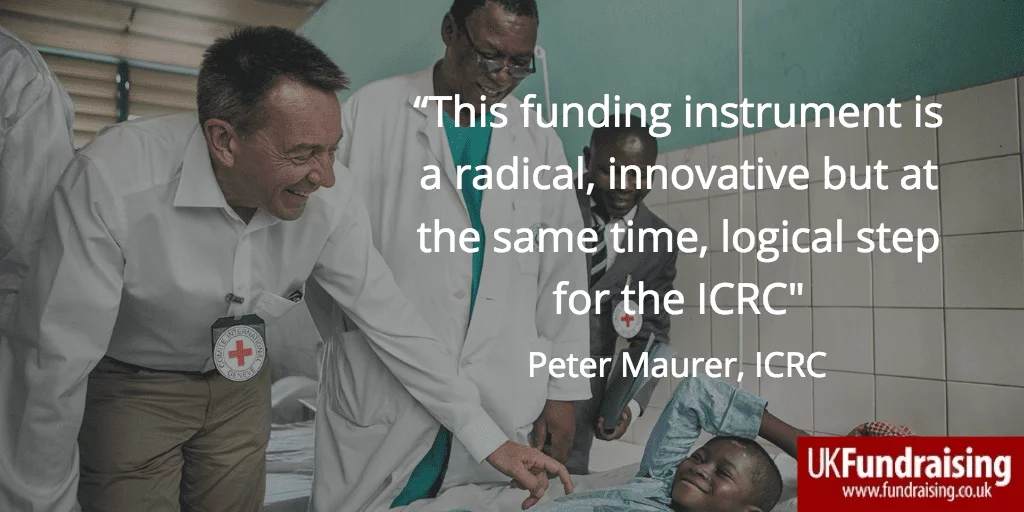ICRC launches £21m Humanitarian Impact Bond
The International Committee of the Red Cross (ICRC) has launched a Humanitarian Impact Bond to help it finance health programmes in countries in conflict. It is seeking private capital for social investment so that it does not rely exclusively on statutory and taxpayers’ funding for its activities.
ICRC claim that it is “the first investment product of its kind”. It will use the 26 million CHF (about £21 million) outcome value to build and run three new physical rehabilitation centres in Africa (Nigeria, Mali and Democratic Republic of Congo) over a five year period, providing services for thousands of people. The payment-by-results programme also includes the necessary training for the new staff as well as the testing and implementation of new efficiency initiatives.
The ICRC is the world’s largest provider of physical rehabilitation services in developing and fragile countries. In 2016, the Physical Rehabilitation Programme operated 139 projects in 34 countries, helping almost 330,000 people with physiotherapy and mobility devices including wheelchairs, artificial limbs and braces.
How the Humanitarian Impact Bond works
The formal name for the Humanitarian Impact Bond is “the Program for Humanitarian Impact Investment”. In fact, it is not a “bond” but a private placement.
The initial payments have been made by social investors, including New Re, part of Munich Re Group) and others identified by co-sponsor Bank Lombard Odier, an existing member of ICRC’s Corporate Support Group. These enable the ICRC to run the activities at each rehabilitation centre and thereby expand the its Physical Rehabilitation Programme.
At the end of the fifth year, outcome funders – governments of Belgium, Switzerland, Italy, the UK and ”la Caixa” Foundation – will pay the ICRC according to the results achieved.
These funds will in turn be used to pay back the social investors. Payment will be partial, in full or with an additional return, depending on how well the ICRC performs in terms of the efficiency of the new centres.
The efficiency will be verified by independent auditors. They will compare the ratio of how many people received mobility devices per physical rehabilitation professional to existing centres.
If above the benchmark, the social investor will receive its initial investment plus an annual return. If the performance of the new centres is, however, below the benchmark, then it will lose a certain amount of the initial investment.
Peter Maurer, the ICRC’s president, said: “This funding instrument is a radical, innovative but at the same time, logical step for the ICRC. It is an opportunity not only to modernise the existing model for humanitarian action, but to test a new economic model, designed to better support people in need.
“We hope that once the pilot project is proven, it will demonstrate that non-traditional financing models can work. There is great potential for investments that are built around improving the social, environmental and economic conditions so that humanitarian action advances in impact, effectiveness and scale in ways never seen before.”
Main image: Tombouctou, 2016. Souleymane, 9 years old, is a mine victim who lost an arm in 2012. He learns how to live normally with the new prosthesis received from the ICRC in the framework of the physical rehabilitation programme. Photographer : S.N. or ICRC
- Allia offers social impact bond to support vulnerable children (4 February 2013)
- Charity bond raises £27m for housing development (23 April 2015)
- Small charities stumped over social impact bonds (18 May 2016)
Advertisement




